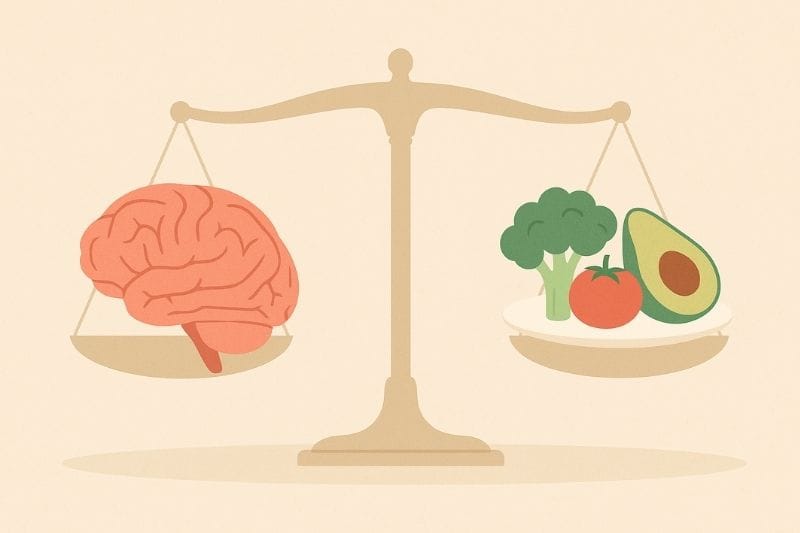GLP-1 medications like Ozempic and Wegovy have been making headlines as powerful tools for weight loss. Originally developed to treat type 2 diabetes, these drugs have been increasingly prescribed to support fat loss in people without diabetes. But with their surge in popularity comes a pressing question: could GLP-1 medications contribute to an osteoporosis epidemic in the future?
The short answer is: potentially, yes. But before panic sets in, it’s important to understand why that might be the case and what people can do to protect their bone health. The good news is that with the right approach – especially when it comes to nutrition and strength training – the risks can likely be managed.
What are GLP-1 medications, and why are they so popular?
GLP-1 (glucagon-like peptide-1) receptor agonists work by mimicking a hormone in the body that helps regulate blood sugar, slow down digestion, and reduce appetite. As a result, people taking these medications tend to eat less and lose weight, often quite rapidly.
For individuals struggling with obesity or related health issues, this can be life-changing. But rapid weight loss doesn’t come without consequences. Muscle and bone mass can also decline during this process, which is where concerns about long-term skeletal health come in.
The connection between weight loss and bone density
Weight loss, particularly when it’s rapid or significant, can lead to a reduction in bone mineral density (BMD). This is especially true if the weight lost includes not just fat, but also lean tissue. Unfortunately, GLP-1 medications don’t discriminate – they help people lose weight, but some of that can be muscle and bone.
Bone is a living tissue that responds to physical activity and the stresses placed on it. When body weight drops, there is less mechanical load on the skeleton. In simple terms, your bones don’t have to work as hard to support your body. Over time, this reduced load can result in weaker bones.
What the early research says
While long-term data is still limited, early studies have shown some cause for concern. Animal studies and small human trials suggest that GLP-1 medications may be associated with decreased bone density, particularly in older adults or those who are already at risk of osteoporosis. However, it’s worth noting that other studies show no effect or even slight improvements in bone health when these medications are combined with appropriate lifestyle interventions.
So, the key point here is not necessarily that GLP-1 drugs are harmful to bones on their own, but rather that the weight loss they induce could increase the risk of osteoporosis, particularly if not managed carefully.
Why muscle matters more than you think
One of the biggest concerns with rapid weight loss is the loss of muscle mass. Muscle is metabolically active and plays a crucial role in bone health. Strong muscles put healthy stress on bones, encouraging them to maintain or even increase their density.
When someone loses muscle, not only does their overall strength decline, but so does the amount of stress placed on their bones. This can lead to a vicious cycle of decreasing muscle and bone mass, particularly in people who aren’t engaging in resistance training or consuming adequate protein.
Protein: the unsung hero of weight loss and bone health
If you’re losing weight – whether through GLP-1 medication, diet, or both – protein becomes even more important. Protein helps preserve lean muscle mass during weight loss, which in turn supports your bones.
For most people, aiming for at least 1.2 to 1.6 grams (sometimes 2) of protein per kilogram of body weight per day is a good target when trying to lose weight and maintain muscle. For example, someone weighing 75kg should aim for 90 to 120 grams of protein daily. Older adults or those already at risk of osteoporosis may benefit from even higher intakes within reason.
Practical Protein Power – How to Hit Your Targets:
To help you hit those crucial protein targets throughout the day, consider incorporating these:
Spread it Out: Aim to consume 20-40 grams of protein at each main meal to maximise muscle protein synthesis and satiety.
Breakfast Boost: Add protein powder to smoothies, Greek yoghurt with berries, or scrambled eggs with spinach.
Lunch & Dinner Staples: Include lean meats (chicken, turkey), fish (salmon, cod), lentils, chickpeas, or tofu generously in your meals.
Smart Snacking: Cottage cheese, a handful of almonds, hard-boiled eggs, or a small protein shake can keep you full and contribute to your daily total.
Strength training: your secret weapon against bone AND Muscle loss
.Fast fact: It is generally considering that around 25% of the total weight lost may come from muscle mass if protein and strength training aren’t prioritised – and this risk increases with rapid weight loss from GLP-1s
While cardio has its place in a healthy lifestyle, it might not do much directly to prevent bone loss. Resistance training, on the other hand, directly stimulates bones to grow stronger by increasing the load they have to bear.
For people using GLP-1 medications, resistance training should be non-negotiable. Ideally, aim for at least two to three sessions per week, focusing on compound movements that challenge major muscle groups.
Building Stronger Bones – Your Strength Training Blueprint:
Focus on exercises that create impact and load through your bones. These are often compound movements that work multiple joints and muscles simultaneously:
- Lower Body Power:
- Squats: Bodyweight, goblet squats, or barbell squats.
- Lunges: Forward, reverse, or walking lunges.
- Deadlifts: Romanian deadlifts (RDLs) or conventional deadlifts (start light and focus on form).
- Upper Body & Core Strength:
- Push-ups: On knees, incline, or full push-ups.
- Rows: Dumbbell rows, resistance band rows, or cable rows.
- Overhead Presses: Dumbbell or resistance band overhead presses.
- Planks: For core stability, which supports overall strength and injury prevention.
Start with bodyweight exercises to master your form, and then progressively overload – gradually increasing weights, resistance, reps, or sets over time. Even short 20 to 30-minute sessions can be effective when done consistently, laying the foundation for stronger bones and preserving muscle mass.
Who should be most cautious?
Certain groups are at higher risk of developing osteoporosis in the first place, and they should be particularly cautious when using weight loss medications:
- Postmenopausal women
- People over 65
- Those with a family history of osteoporosis
- Individuals with low baseline muscle mass
- People with diets low in calcium or vitamin D
Everyone can benefit from strength training, but if you fall into one of these higher-risk categories, it’s especially important to work with a healthcare provider to monitor your bone health.
Beyond the Scale: Cultivating Sustainable Health During Rapid Weight Loss
If you’re losing weight quickly – whether that’s through GLP-1 medications or just a big shift in routine – it’s worth thinking about more than just what the scales say. Big changes like this can be great for your health, but they also come with risks, especially if things like muscle and bone health aren’t being supported along the way.
As a weight loss coach, I always encourage clients to look beyond short-term weight loss and build habits that actually support their health for the long run. A few things I often talk about:
Focus on what you’re doing, not just what you’re losing
Rather than fixating on the number going down, pay attention to the actions you’re taking as well – hitting your protein goals, getting your strength training in (again, even short sessions help), and eating food that leaves you feeling nourished. That’s the stuff that leads to lasting results.
Listen to your body
When weight’s coming off quickly, it’s easy to miss signs that your body might need more support. Low energy, sore muscles that aren’t recovering, or feeling run down are all signs to tweak things – whether that’s more rest, more protein, or better fuelling.
Celebrate what the scales don’t show
Feeling stronger, lifting heavier, walking further without getting tired, better sleep, more focus – these are all signs that your health is improving, even if the number on the scale slows down.
Think long-term
Losing weight is one part of the picture – keeping it off and staying well is another. Building a consistent routine around protein, strength training, and general movement gives your body the tools it needs to stay strong and healthy at any weight.
When weight’s coming off fast, a bit of strategy goes a long way. By focusing on the habits that protect your muscle, support your bones, and improve how you feel day-to-day, you’re much more likely to see lasting result, and feel good while you’re getting there.
Balancing the benefits and risks
To be clear, GLP-1 medications can offer huge benefits to people who need to lose weight for health reasons. Reducing body fat can lower the risk of type 2 diabetes, heart disease, and certain cancers. But like any medication, it’s not without potential downsides.
Understanding the risks means you can take practical steps to protect your long-term health. With the right combination of diet, strength training, and medical oversight, it may be possible to enjoy the benefits of GLP-1s without compromising your bone health.
So, What Should People Do?
Weight loss can be a powerful health tool, but protecting your bones should be part of the conversation. The combination of sufficient protein intake and regular strength training isn’t just about looking good – it could be the key to maintaining mobility, independence, and resilience well into older age.
If you or someone you know is considering or already taking a GLP-1 medication, speak to a medical professional. Small actions now can help prevent bigger problems later.
Related studies OR articles:
Disclaimer: This article is for informational purposes only and does not constitute medical advice.
I can help you…
I am a Weight Loss Accountability and Support Coach, successfully helping people just like you to lose weight and keep it off:
I am a Fitness, Strength and Nutrition Coach for sports events and athletes – helping people like you to get fitter, stronger and faster:
I am a Menopause Support Coach, find out more about how I can help you:
Want to get stronger, fitter or gain muscle?




